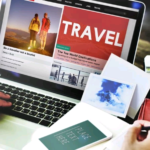A few notes to prepare you for the adventure
1. Understand your fitness level
The mountain highlands of Uganda, Rwanda and Eastern DRC are generally at a high altitude (around
5,000 feet above sea level). Gorilla treks vary in altitude but can be on steep paths above 8,000 feet.
Be realistic about what you’re able to do and ensure that you communicate with your guide about
how you feel and the pace of the hike.
∙ Going slowly and staying well hydrated are the most important things to do.
2. Hire a porter to accompany you
There are seasoned porters at the park headquarters who can assist you if you so choose (optional).
Not only will they carry your backpack for you and give you a walking stick (more helpful than you
think even for the young and fit!) but they also help you up and down slippery, steep parts of the
hike. Even if you don’t mind carrying your own bag, and don’t need help, it’s a good idea to take a
porter – most of them are rural folk make a living from gorilla tourism, so by paying someone $10 –
20 to carry your bag, you’re supporting both the local community and gorilla conservation. This is
especially true if you intend lugging lots of photo gear.
3. Gear
∙ Comfortable hiking boots (running shoes will often due as well, but not as good) ∙
A moisture-wicking base layer, light rain gear (just in case)
∙ The rainforest is loaded with stinging nettles. Protect yourself by bringing a pair of thick
gloves (gardening gloves would be perfect), wearing knee-high hiking gaters, a long-sleeved
lightweight shirt and wearing fairly thick pants.
∙ Only take essentials in a small backpack – two bottles of water, maybe a snack if you’re a
hungry hiker, camera, hat and sunscreen.
4. Which camera to bring?
In an ideal world, you could bring three camera bodies with three different lenses – from a zoom
lens, wide angle and an in-between lens or a fixed focal length lens. That way you are prepped for all
situations! However, the gorillas will often move around, and it’s tricky to change lenses while
they’re moving and there is often rain. It may be best to decide if close-ups of faces and body parts is
your thing or whether it is the overall scene.
Mobile phones work very well most of the time for scene shots and video grabs.
It is also advisable to bring camera jackets in case of rain – the photography will still be good. Ensure
that your camera is fully charged, and you’ve packed extra memory cards. Lastly don’t forget to put
your camera down and simply enjoy being with the gorillas!
5. Try and shoot video
Photos are the go to, but think about shooting video as well. Get familiar with your video mode and
settings. Look for scenes where your travel companions and the enchanting gorillas are all in frame!
6. Practice gorilla etiquette
Don’t forget that you’re encountering mountain gorillas in their natural habitat – this is not a zoo
experience. Respect them, their environment and their behavior and know that you’re a guest in
their world. Having said that, don’t worry about being attacked! Gorillas are not as aggressive as
popular culture has made them out to be. While they’re huge (silverbacks can be over 200 kgs) and
powerful, gorillas on the whole are gentle and shy creatures. There has never been an incident of a
habituated gorilla attacking a tourist. These habituated groups see tourists every single day, so
they’re pretty used to us.
Your tracking guide will tell you more about how to behave when you’re in the presence of gorillas
but here are some things to keep in mind:
When you approach gorillas, and while you’re around them, make a grunting sound (your guide will
show you how) to reassure them that you are a friend. They may even communicate with you!
✔ Don’t stare straight into gorillas’ eyes – this can be seen to be aggressive.
✔ Don’t ever run from a gorilla – if one approaches you just act submissive and crouch down.
✔ Don’t go gorilla tracking if you’re sick – gorillas are susceptible to human illnesses, and if one
the gorilla in the group catches flu from you, then the entire group could die. Likewise if
you sneeze or cough, turn your head away from the gorillas so as not to spread your germs.
✔ If handed medical face masks, please use them properly for the gorillas’ sakes.
✔ Don’t eat or drink in front of gorillas.
✔ You often get very close to the gorillas – within a few meters. Don’t push this though – don’t
try and get too close. Very often they will approach you. Please follow the instructions of the
guides carefully.
7. Make use of your one hour
You are only allowed one hour with gorillas. This is so that gorilla groups don’t get stressed by too
much contact with tourists. Make the most of the hour! It goes by so fast – get your photo and video,
but don’t forget to take time to just appreciate being in the presence of these great apes.
This is a truly unique wildlife experience. Try not to over think things. Be prepared and go with the
flow with your guides and you are sure to have an amazing encounter.
Looking forward to fruitful travel with you and your familly.









 You cannot copy content of this page
You cannot copy content of this page